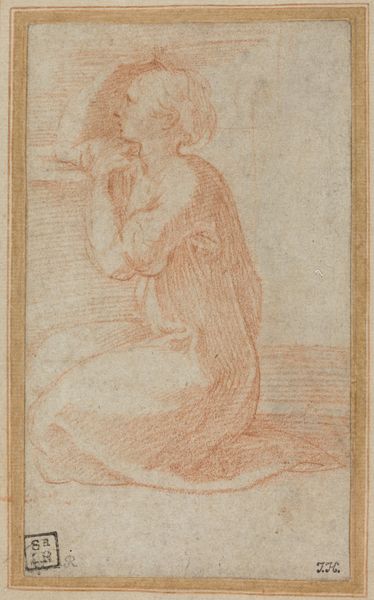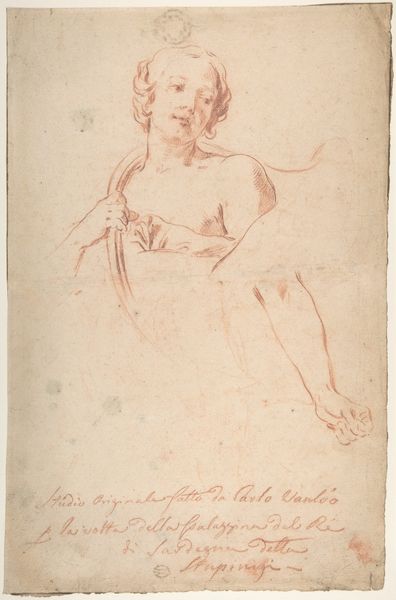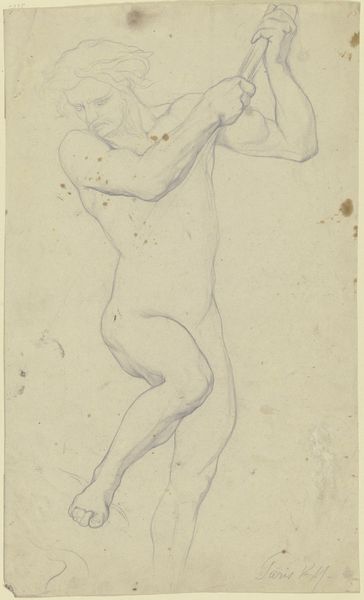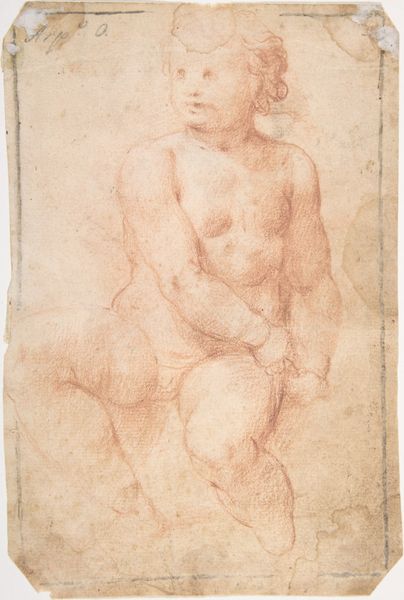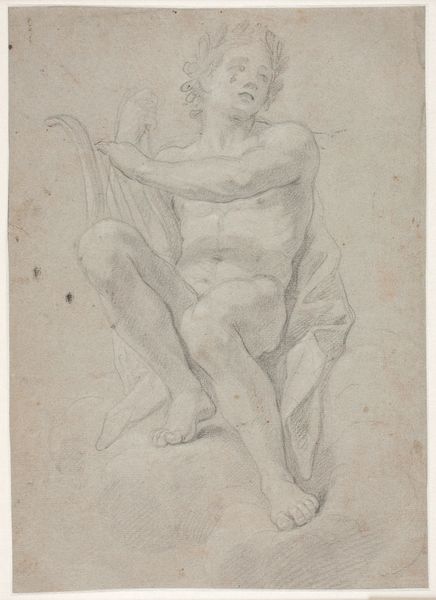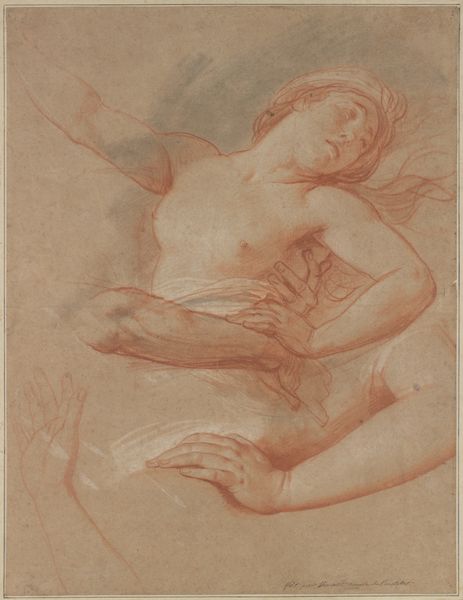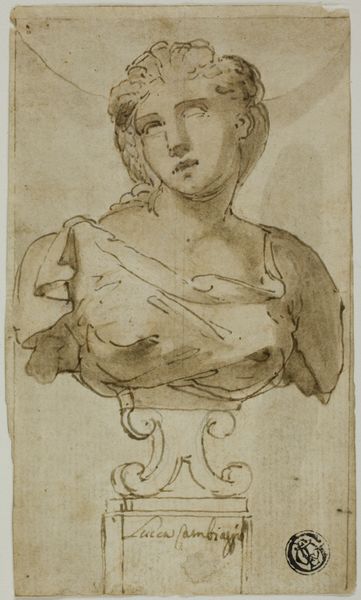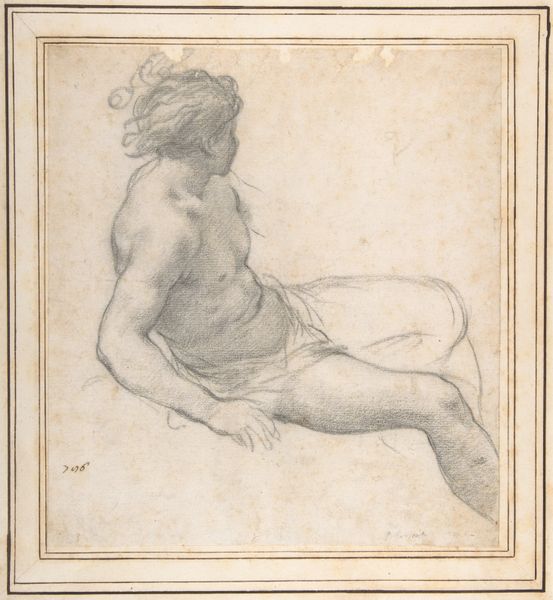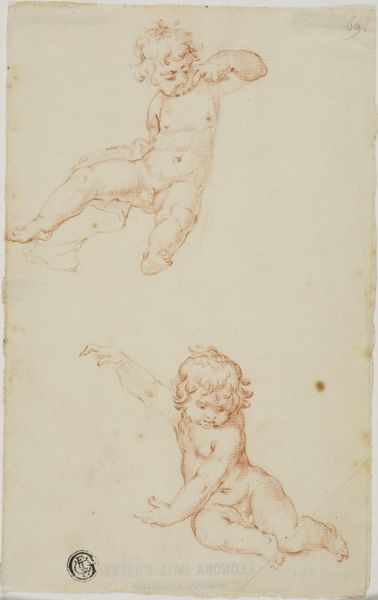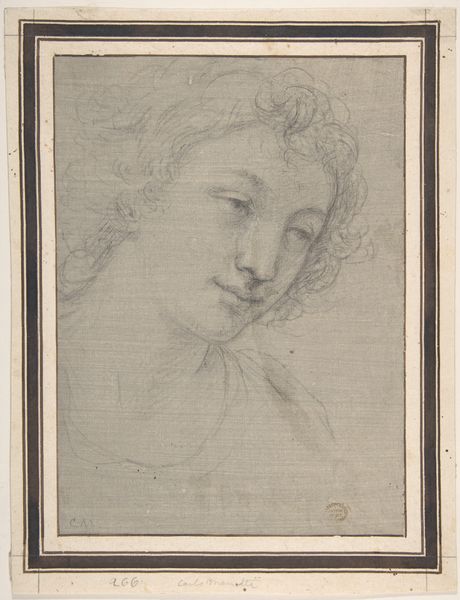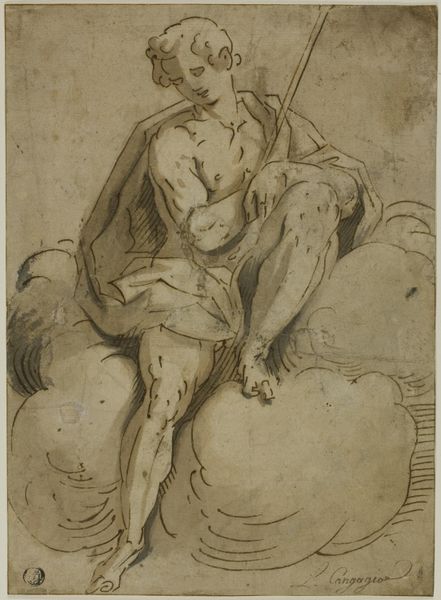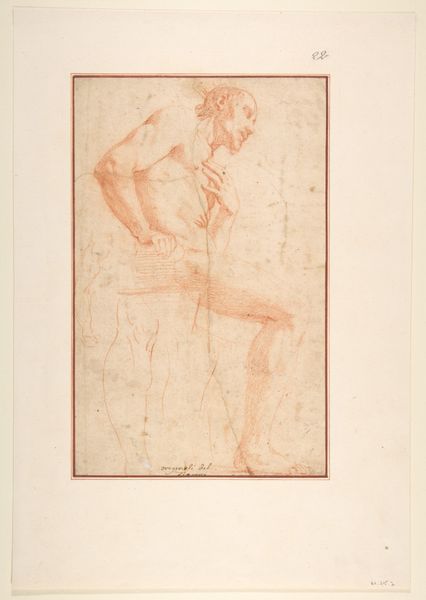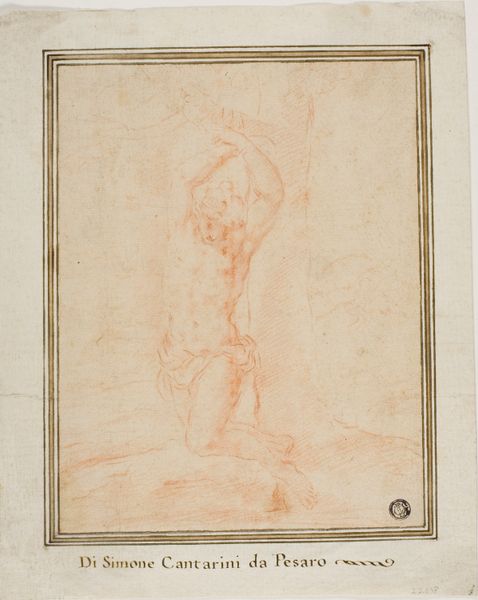
drawing, print, paper, ink, pencil, chalk, graphite
#
portrait
#
drawing
# print
#
paper
#
11_renaissance
#
ink
#
coloured pencil
#
pencil
#
chalk
#
graphite
#
academic-art
Dimensions: 278 × 188 mm
Copyright: Public Domain
Editor: This drawing, "Putto Holding Staff" by Guido Reni, feels incredibly gentle. The lines are so soft, even though it's just pencil, chalk, graphite, and ink on paper. I'm struck by the upward gaze of the cherub; it has such a sense of innocence. What stands out to you in this piece? Curator: What grabs me is that this is a "putto", a specific type of cherubic figure in Renaissance art. Consider where such imagery typically appears: think of the infant Christ child, often accompanied by angelic beings. Guido Reni, however, offers us an unadorned putto. Note how he holds a staff – is it for guidance, authority, or something else entirely? This emblem transforms the typically saccharine figure. Editor: So, the staff adds a layer of symbolic weight beyond simple innocence? Curator: Exactly. We see in Reni’s mark-making a sensitivity to the role these figures play in cultural memory. Consider also how Renaissance art drew inspiration from classical antiquity; this piece resonates with the powerful symbol of eros that once guided figures such as Aphrodite. Editor: That’s a perspective I hadn’t considered! The classical element almost subverts the Christian ideal of a putto. I had taken it simply as a pretty picture but it shows the connection between two visual languages, doesn’t it? Curator: Visual languages build upon each other, yes. Understanding those connections unveils deeper layers of meaning in a single image, which prompts us to think of symbols over time. Editor: I'll definitely look at cherubs differently now, seeing how they have evolved into new, potent signifiers from a long genealogy!
Comments
No comments
Be the first to comment and join the conversation on the ultimate creative platform.
